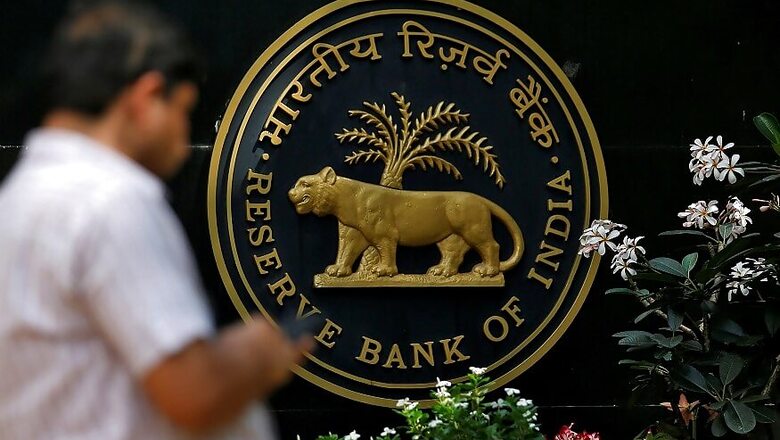
views
New Delhi: The time to debate whether the government did the right thing in coaxing the Reserve Bank of India (RBI) to transfer much more money than even what it had itself budgeted for is now past. Former RBI governors and other experts had warned it against raiding the RBI chest but the deed is done.
Now what needs to be seen is whether the bonanza is pumped into the economy as fiscal stimulus or whether the government tries to use it to keep a tight leash on its fiscal deficit, since its own revenue projections for 2019-20 have been falling short of target.
India’s economy is in the throes of a slowdown, with consumption falling across rural as well as urban markets, exports in trouble and industrial production slowing down. Gross Domestic Product (GDP) growth for the first quarter of this fiscal (April-June 2019) is believed to have fallen further from the 5.8%, 20-quarter low figure seen in the immediately previous quarter.
The government was widely expected to announce a fiscal stimulus worth lakhs of crores of additional expenditure over the weekend to kick-start economic growth. But finance minister Nirmala Sitharaman instead came up with a string of revival measures, which are welcome, that involve little extra government spending.
Will the RBI largesse push the government to actually hike public spending or announce further measures to boost growth? This remains to be seen.
Economic affairs secretary Atanu Chakraborty told CNBC-TV18 on Tuesday morning that the RBI surplus will “flow into the Consolidated Fund of India. Surplus to be spent as per budgetary process on capex, revenue expenditure”.
So dare we hope that instead of dressing up fiscal deficit, the money will be pumped into capital expenditure?
As per an RBI statement, the central bank will transfer Rs 1,76,051 crore to the government. The breakup is like this: Rs 1,23,414 crore of surplus for the year 2018-19 and Rs 52,637 crore of excess provisions identified as per the revised Economic Capital Framework adopted by the RBI.
Since the government had budgeted for transfer of just about Rs 90,000 crore from the RBI for FY19, the actual bonanza is far beyond its own calculations.
Analysts are uncertain over whether the much needed cash, which the government is slated to get, will all come to the starved capital investment space. Ratings agency CARE Ratings said in a note on Tuesday that as there would be a surplus of about Rs 86,000 crore, two scenarios can be looked at:
Scenario 1:
The Budget of FY19-20 had assumed a very high growth in the size of the Budget from around Rs 23.11 lakh crore (actual in FY18-19) to Rs 27.86 lakh crore in FY20 (B) while presenting the FY19 (Revised) size at Rs 24.57 lakh crore. “This was probably a very optimistic scenario as garnering additional resources of Rs 4.76 lakh crore during a year when the GDP growth is slated to slow down to less than 7% and inflation (is slated to) be at around 3%-3.5% was going to be challenging. In such an event, these additional resources from RBI will help to shore up revenue.”
Scenario 2:
The Budgetary targets are met in the normal course of activity. In this situation, the government will have this additional amount to spend as a stimulus and may be part of the future announcements to be made by the FM.
Analysts at Kotak Institutional Equities noted that fiscal slippage risks remain for the government due to severe revenue shortfall. They have estimated a shortfall of around Rs 1.5 trillion (Rs 1.5 lakh crore) in GST revenues (around Rs 95,000 crore in net tax revenues). And if direct tax collection disappoints too, fiscal pressures will intensify (amidst slowing growth).
So the question over whether the government will be able to pump all the extra cash from RBI into the economy doesn’t have any easy answers.
How starved the government is of revenue this fiscal and the extent of its reluctance to spend money on public works is clear from this data: analysts at brokerage Prabhudas Liladhar have said in a note that capital expenditure between April-June 2019 declined by 28%, from Rs 87,000 crore to Rs 63,000 crore, due to sharp cut in expenses on rural development, roads and sanitation by 22%, 98%, and 60%, respectively.
During the first quarter, tax revenues were up by 6% while other receipts declined by 73% due to lack of any divestment proceeds or money which was expected to be raised by the government by diluting its stake or exiting some public sector units.
Share of corporate tax and customs increased in gross tax revenue from 16.8% and 8.6% in June 2018 to 17.6% and 9.9% in June 2019.
“Cumulative fiscal deficit till June 2019 stood at Rs 4.3 lakh crore, which is 61% of the budgeted estimate and the lowest in last three years. Fiscal deficit as of June 2018 and June 2017 was at 69% and 81% of budgeted estimates. The lower fiscal deficit is on account of lower capex and interest payments. Revenue deficit during first three months stood at 79% of the budgeted target versus 85% YoY. Revenue deficit target for FY20 stood at 2.3% of the GDP.”
So is a big bang fiscal stimulus coming? We will know in the next few weeks.
(Author is a senior journalist. Views are personal)




















Comments
0 comment